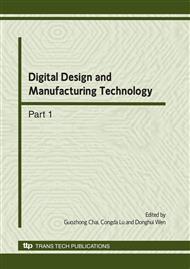p.700
p.705
p.710
p.714
p.719
p.724
p.729
p.733
p.738
Thermomechanical Simulation of Single Splat Solidification and Cooling in Plasma Spray Forming
Abstract:
Mechanical strength and service life of the coatings manufactured by plasma spray forming are significantly reduced by residual stresses. A 2D finite element model constructed for temperature and residual stress simulation of a single stainless steel splat solidifying and cooling on the carbon steel substrate is presented in this paper. Simulated results show that the temperature of the splat rim is higher than that of the central part during the initial stage of solidification, and the temperature difference between the two parts reverse thereafter. The minimum residual stress locates at the rim of the top surface of the splat, and the maximum residual stress, which decreases when the substrate is preheated to a higher temperature, situates at the rim of the interface. Stresses appear as tensile stresses within the splat and compressive stresses within the substrate. The research can provide quantitative understanding of the temperature and residual stress states at the splat level.
Info:
Periodical:
Pages:
719-723
Citation:
Online since:
March 2010
Authors:
Keywords:
Price:
Сopyright:
© 2010 Trans Tech Publications Ltd. All Rights Reserved
Share:
Citation:


